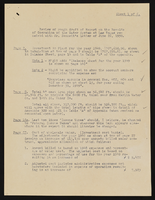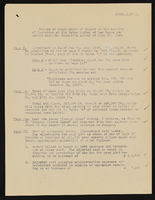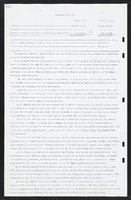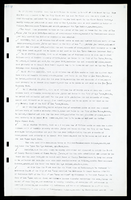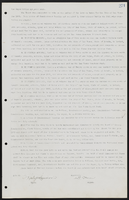Search the Special Collections and Archives Portal
Search Results

Transcript of interview with Virginia Beckly Richardson by Claytee D. White and Carole C. Terry, November 5, 2009
Date
Archival Collection
Description
Through her oral interview and the materials she provided, Virginia Beckley Richardson gives us a unique and fascinating look at both a pioneer family of Las Vegas and the early activities of the Service League, the forerunner of the Junior League of Las Vegas. Her personal recollections are an insight into life in the city's early years, and the biography of her father written by her brother, Bruce, humanizes a prominent figure in Las Vegas' history. The newspaper articles she made available enhance her descriptions of the Service League's activities. In addition, the article, "Merchant's Home Becomes Monument," describes her family home originally located on Fourth Street and relocated by the Junior League of Las Vegas in 1979. Her recollections clearly demonstrate her enthusiasm about her family's accomplishments and her involvement in the Service League
Text
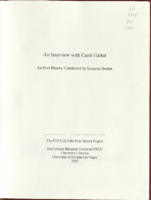
Transcript of interview with Carol Harter by Suzanne Becker, April 20, 2007
Date
Archival Collection
Description
Carol Harter and her husband of 46 years started their married lives by running away from college in their sophomore year. They spent the 60's working toward their degrees. Carol earned her bachelor's in 1964 and her master's in 1967. One of her professors encouraged her to go for her PhD at a time when women simply did not aspire to such heights. Dr. Harter completed her PhD in 1970, and because her husband wanted to work on his doctorate, they moved to Athens, Ohio. She taught at Ohio University while he completed his courses. They lived and worked and raised their children there for 19 years. Carol held the positions of ombudsman (2 years), vice president and dean of students combined (6 years), and vice president at the university, and then accepted the position of president at SUNY Geneseo (in New York). Carol was nominated for the presidency at UNLV in 1994, and she accepted the job in 1995. Her career here has been phenomenal, as she saw the potential of this very young university and set about bringing in the faculty, the funding, the buildings, and the vision to create a first-rate research oriented facility. During her administration, the new library went up, the law school and dental school were built, and over 550 million in gifts and pledges were raised. This includes money raised for the "Invent the Future" campaign. Under Dr. Harter's guidance, women's sports were expanded, multiple graduate degrees were developed, more money for research and buildings was raised, and UNLV has become a major research university. Dr. Harter leaves behind a rich legacy, including her vision of the UNLV Midtown project, a cultural district where the university may one day interface with the community.
Text

Transcript of interview with Janet Savalli by Irene Rostine, September 21, 1996
Date
Archival Collection
Description
Interviewed by Irene Rostine. Janet Savalli's family moved from Phoenix, Arizona, to Henderson, Nevada, in 1945 so her father could work at the Basic Magnesium plant. A few years later, when she was a junior in high school, Janet began her 46-plus years career at the Southern Nevada Telephone Company, which eventually became Sprint. During that period she held several positions, including operator, supervisor, schedule clerk, trainer, investigator, and community relations coordinator. Janet also talks about the atomic bomb testing at Camp Mercury and Camp Desert Rock near Las Vegas. Janet credits the atomic bomb testing with jump-starting the second wave of growth Las Vegas experienced following World War II. This growth had a particular influence on the telecommunications industry's need to expand in Las Vegas.
Text



